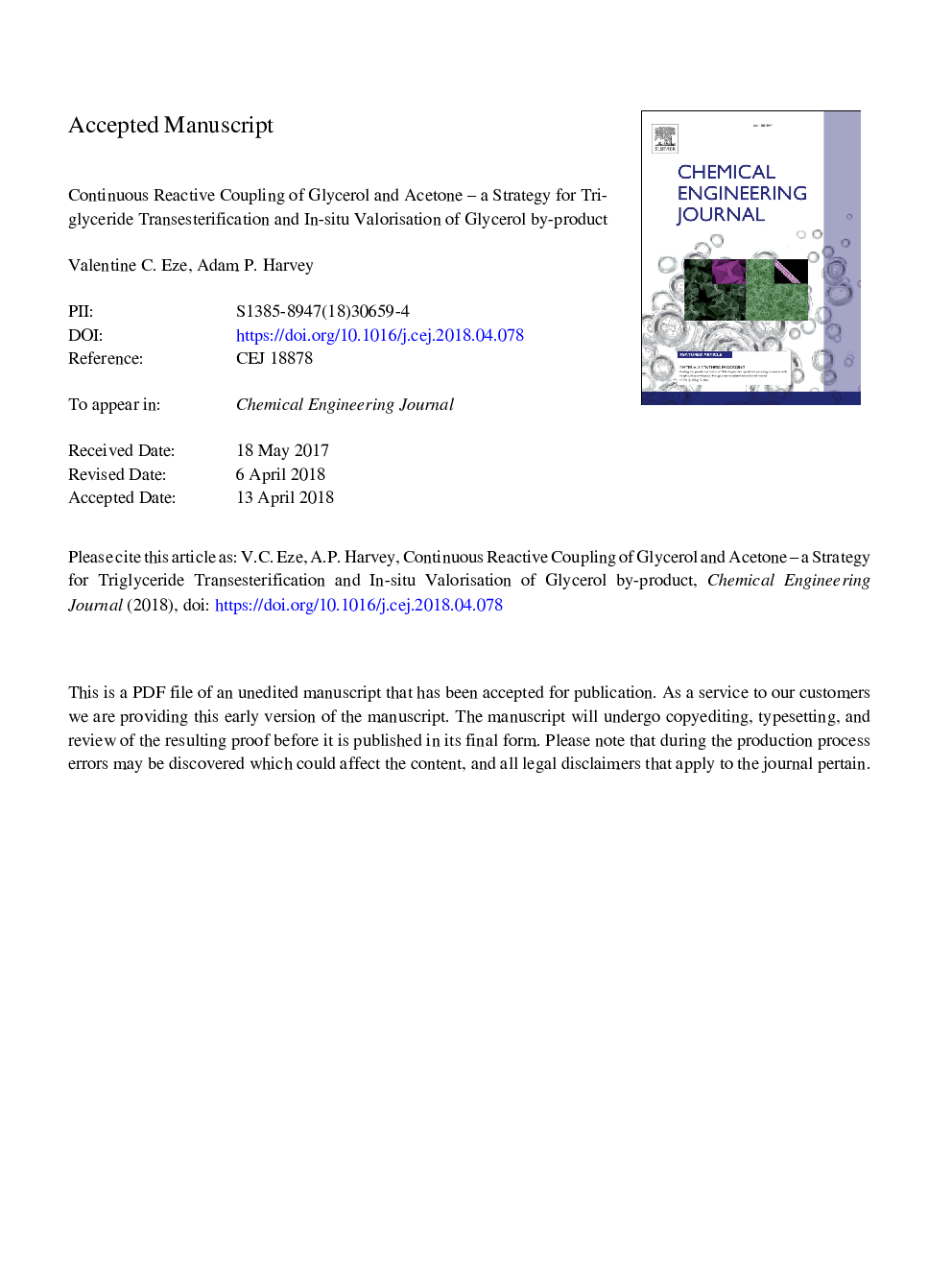| Article ID | Journal | Published Year | Pages | File Type |
|---|---|---|---|---|
| 6579203 | Chemical Engineering Journal | 2018 | 32 Pages |
Abstract
Methyl esters of fatty acids are widely used as biodiesel, a sustainable replacement for petro-diesel. The conventional biodiesel process produces crude glycerol, which constitutes about 10â¯wt% of the total products. This has led to a surplus of crude glycerol due to global increase in biodiesel use, necessitating increased research into sustainable processes that could convert the crude glycerol into higher value-added products. This study investigates biodiesel processes for continuous transesterification of triglycerides to methyl esters, coupled to conversion of the glycerol by-product into solketal, a value-added product, via reaction with acetone in situ. The study was carried out using one-stage and two-stage catalytic transesterification of triacetin and methanol in mesoscale oscillatory baffled reactors (meso-OBRs). The two-stage process involved two meso-OBRs in series packed with AmberlystTM resin catalysts: a basic AmberlystTM A26-OH in the first stage to catalyse transesterfication of triacetin with methanol, and an acidic AmberlystTM 70-SO3H in the second stage to catalyse the coupling of glycerol and acetone to form solketal. One-stage triacetin transesterification and glycerol coupling with acetone was carried out in a meso-OBR packed with the acidic AmberlystTM 70-SO3H resin. In the two-stage process, the triacetin was converted to 99.1â¯Â±â¯2.0% methyl acetate and 98.0â¯Â±â¯1.3% glycerol after 25â¯min residence time in the first reactor and the glycerol was reacted with acetone in the second reactor to achieve 76.5â¯Â±â¯2.8% solketal conversions after 35â¯min. The single-stage process achieved 48.5â¯Â±â¯2.7% solketal conversion after 30â¯min. The meso-OBR was operated continuously to achieve high quality steady states and consistent triacetin conversions. The triglyceride transesterification with reactive coupling of glycerol with acetone produces less crude glycerol by-product. This process strategy could be optimised for future biodiesel production.
Keywords
Related Topics
Physical Sciences and Engineering
Chemical Engineering
Chemical Engineering (General)
Authors
Valentine C. Eze, Adam P. Harvey,
